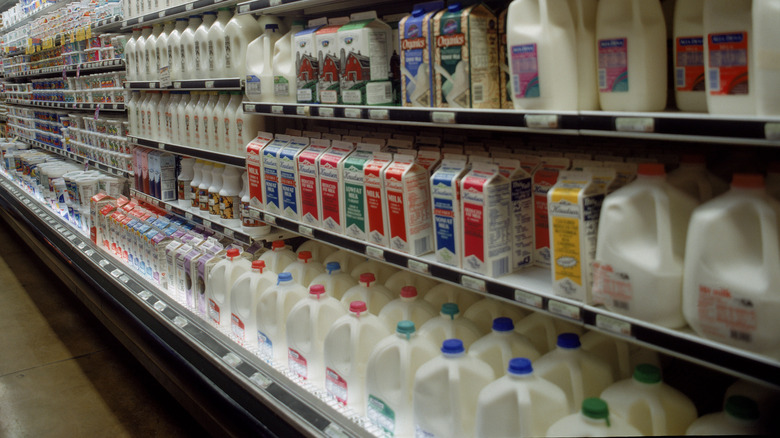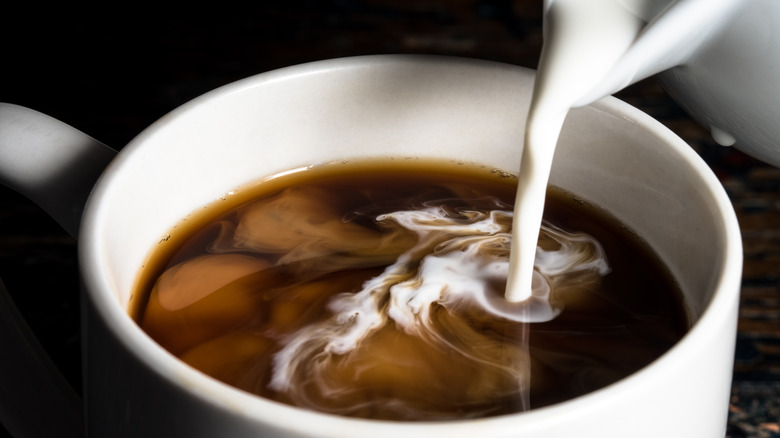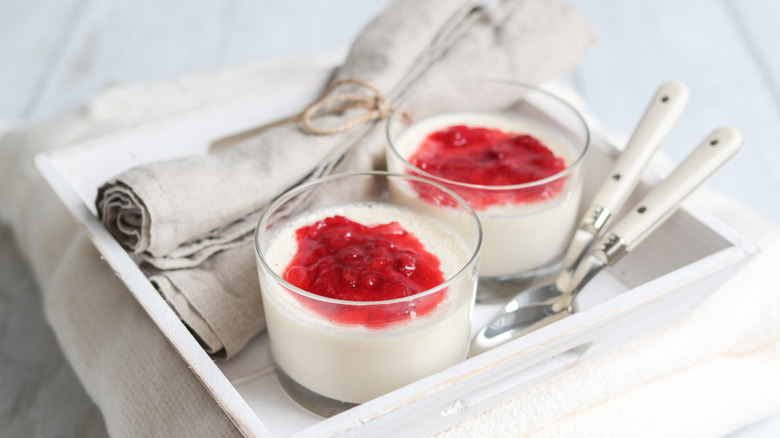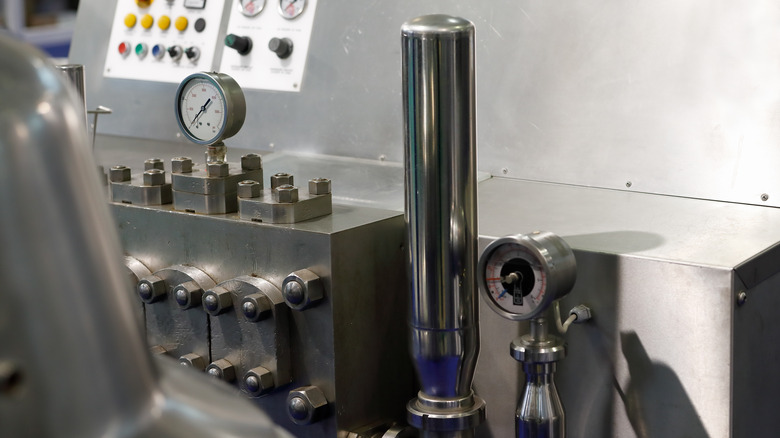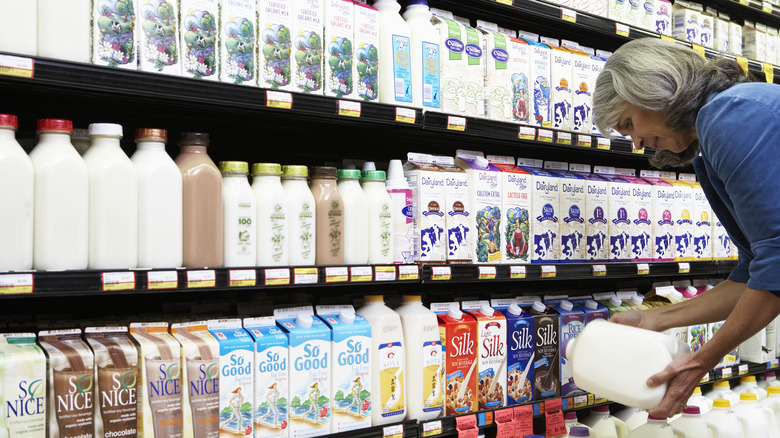What Exactly Is In Half-And-Half And What Does It Taste Like?
Have you ever wondered what's actually in those little cups of half-and-half on the table at your local diner? It's no big mystery: Half-and-half is literally just half milk and half cream. While heavy cream contains at least 36% milk fat, half-and-half can contain between 11% and 18% of the stuff. This makes it considerably fuller in flavor than whole milk, which has just above 3% milk fat. For some, it's a perfectly balanced dairy product, tasting not too rich or light but just right. That's why so many people love to add it to their coffee. It's also why it's used as the secret ingredient in many an accomplished home cook's quiche, custard pie, mashed potatoes, and panna cotta — anything that can benefit from a little added creaminess.
While there are other drinks called "half-and-half" around the world — like Belgium's white wine with champagne and Ireland's mix of stout and lager – in the United States, the category generally refers to the mixture of whole milk and cream. (You probably wouldn't want to add those other beverages to your mashed potatoes.) Perhaps surprisingly, however, there's more than one kind of dairy-based half-and-half.
Other varieties of half-and-half
As you browse the dairy aisle, you may notice a product called fat-free half-and-half. If you're thinking that a fat-free product made of milk and cream doesn't make much sense, well, you're not wrong. Fat-free half-and-half is loaded with additives like corn syrup and thickeners that try to mimic the consistency of the conventional kind. There's nothing wrong with liking the flavor, but you probably won't find this variety ranked among the best and most nutritious coffee creamers. Plus, not only will it taste different from real half-and-half, but it will behave differently when cooked.
The half-and-half you buy in the refrigerated section at the grocery store is also different from the single-serve plastic cups at your local fast food joint or greasy spoon. Those have been specially processed to be shelf stable. This type of half-and-half also contains preservatives, including sodium citrate and carrageenan.
If you ever run out of store-bought half-and-half, you're in luck: It's almost as easy to make as it is to buy. Just mix equal parts heavy cream and milk.
How to cook with half-and-half
If you're a coffee drinker, you're probably familiar with at least one use for half-and-half: Coffee creamer. But it's also a common ingredient in sweet and savory cooking.
Half-and-half is a great choice for custards — cooked mixtures of dairy and eggs — for example. Whether it's a pumpkin pie or a quiche, you want your filling to be luscious without being heavy. Half-and-half is a perfect happy medium. Sometimes, you don't want lightness. You want creaminess. The next time you try a recipe that calls for milk, try half-and-half instead. It adds tasty richness to everything from macaroni and cheese to mashed potatoes.
While you can swap half-and-half for milk, think twice before using it in place of cream. Not only will you miss out on delicious creaminess, but you might ruin your recipe. Because half-and-half has less milk fat than cream, it behaves differently when exposed to heat and aeration. Read: It doesn't whip very well. And it does curdle when boiled. It's a good rule of thumb for cooking, in general: When in doubt, add more fat, not less.
How is half-and-half made?
Half-and-half doesn't just come out of the cow that way, but it isn't an ancient recipe, either. It's a dairy product created by William Boutwell of Lake Worth, Florida, who first sold the combination of cream and milk in the 1920s. It slowly gained popularity until it became an everyday staple in American kitchens and grocery stores.
If you mix your own half-and-half at home, you know exactly how it's made: Put equal parts milk and cream in your container of choice, then stir. But industrial dairies go further than that. First of all, half-and-half is always pasteurized and often ultra-pasteurized to make it last for weeks. It's also usually homogenized, meaning the milk and cream are forced through small holes via intense pressure until the fat is emulsified and stable. That's why store-bought half-and-half doesn't separate when you pour it into your coffee. Dairies may also add emulsifiers, stabilizers, sweeteners, and flavoring to their half-and-half, according to the FDA Code of Federal Regulations.
Where to buy half-and-half
You can purchase half-and-half in any major grocery store, next to the milk and cream — as long as you're in the United States, anyway. Half-and-half is a decidedly American specialty. If you do find yourself outside of the U.S. and craving a splash of half-and-half in your coffee, don't just give up. Look for a dairy product with a similar milk fat percentage (under 18% will do the trick). In the United Kingdom, you can try single cream, which has 18% milk fat.
In the U.S., however, half-and-half is a well-populated section of the dairy aisle. You might have dozens of options to choose from. Which carton should you go for? If you follow one rule when buying half-and-half, make it this: When shopping for half-and-half, don't forget to check the ingredient list carefully before you buy a container; ending up with the wrong kind could limit how you're able to use it.
